California AR-15 Magazine Ban [Legal Status Explained]
As of August 14th, 2020, California’s ban on “high-capacity” AR-15 magazines has been overturned by the 9th Circuit Court of Appeals.
According to CBS news:
“The panel’s majority ruled Friday that the law banning magazines holding more than 10 bullets violates the constitutional right to bear firearms…”
This is HUGE news for Californians who are, no doubt, rushing right now to purchase “high-capacity” AR-15 magazines.
However, it also invites a HUGE question: Does this mean that it is legal for California residents to purchase “high capacity magazines” (or for companies to ship “high capacity magazines” into California)?
The answer isn’t quite so clear.
As of right now, the current ambiguity and the current technical status of the law makes me believe that it is NOT legal…. yet.
Let me try to explain as we go through a bit of the legal history of the California magazine ban.
First, a note: yes, I’m a firearms attorney but I’m not YOUR attorney. This article is merely educational and my thoughts – it is not legal advice.
CA Mag Ban History
California Penal Code § 32310 makes it unlawful for anyone to manufacture, sell, lend, give, import into the state, buy, or receive a “large capacity magazine.” California Penal Code § 16740 defines “large-capacity magazine” as “any ammunition feeding device with the capacity to accept more than 10 rounds.”
Simply, in California, this law bans the making, selling, or purchasing of firearm magazines that can hold more than 10 rounds. Through a few changes in laws since it first became law in 2000, it was strengthened by 2016 to outright ban possession and require the surrender of previously possessed large capacity magazines.
As we discuss this issue, we’ll refer to the banned magazines as “high capacity magazines,” “large capacity magazines,” and “LCMs.”
California Law Challenged and Overturned
Virginia Duncan, and other plaintiffs, challenged this new law in the case Duncan v. Becerra. If you’d like to see a complete list of the court records and filings, you can see that here.
Federal District Court Judge Roger T. Benitez agreed with the plaintiffs that California’s “large capacity magazine” ban violated the Second Amendment’s protection of our right to keep and bear arms and thereby struck-down California’s law banning LCMs.
As you can imagine, Californians quickly bought every “high capacity magazine” they could find.
Victory “Paused”
Unfortunately, the State of California appealed the ruling because they didn’t agree with it. This meant that Judge Benitez’s opinion was going to be reviewed by a higher court and it was not clear whether his striking-down of California’s law would stand.
Becuase Judge Benitez strike-down of the CA law was being appealed and the ultimate status of the law was now unclear, Judge Benitez ordered a “stay” of his opinion a week later. A “stay” effectively means that his opinion is put on pause until things could be sorted out and settled.
For Californians, this meant that their week-long buying-spree of magazines was over until everything could be resolved for good. This week is often called “freedom week” because Californians were able to exercise their freedoms for just that one week.
California’s Appeal
California appealed to the Ninth Circuit Court (typically an extremely liberal court) to undo Judge Benitez’s smack-down of their law. Surprisingly, and thankfully, a panel of four Ninth Circuit Judges agreed with Judge Benitez and upheld his opinion.
This means that the State of California lost their appeal and their law banning “large capacity magazines” is overturned.
Are High Capacity Magazines now Legal in CA?
Although a legal victory has been won against California’s magazine ban, there’s a legal technicality that keeps the ban in place (for now).
Although the Ninth Circuit agreed with Judge Benitez that the law is unconstitutional, Judge Benitez’s “stay” of overturning the law until the appeal is complete still stands.
There’s a chance Judge Benitez will undo his “stay” and therefore finally strike-down the California law. However, there’s also a chance it remains.
Why?
Well, despite the Ninth Circuit victory, the final legal status of the lawsuit is still unclear. First, there could be an “en banc” review where the case is heard by all of the Ninth Circuit judges and not just the panel of four. Second, the case could be appealed higher and accepted by the Supreme Court of the United States.
Therefore, because there are legal options left for California, there is a chance that California might ultimately win – especially with an ‘en banc” review… I’m not confident the latest ruling will survive even though it should because of the Ninth Circuit’s history.
So, to avoid another “freedom week,” the “stay” might remain and the law could still stand until the legal fight is finally over.
California Magazine Ban Legal Analysis (Sort of)
Here’s where I’m going to over-simplify some legal concepts in the hope of clearly explaining what is goin on here.
DISCLAIMER: this over-simplification won’t be a perfectly accurate explanation of the law as I am attempting to make this topic palatable to the layman.
First I’m going to introduce some legal concepts and then I’ll explain the Ninth Circuit opinion.
Levels of Scrutiny
When I teach college students in my Constitutional Law/Civil Liberties courses, I hammer the concept of the levels of scrutiny into their brains as these are fundamental to understanding whether a law violates our Bill of Rights.
Depending on the relative importance of each Constitutional protection of our rights, one of three levels of scrutiny is applied to determine whether the law is valid.
This means that there are three tests a court uses to see whether a challenged law is valid or whether it is unconstitutional depending on which Constitutional Amendment applies.
The three levels of scrutiny, in order of highest to lowest are: strict scrutiny, intermediate scrutiny, and rational basis.
The way I like to break down these levels of scrutiny is to first ask what the government’s interest is in the law being challenged and then asking how the government’s interest is related to the law. I cover this topic in episode #16 of my Trigger Words podcast.
Strict Scrutiny:
This test applies when a fundamental right is being infringed upon. The government must have a compelling interest and the law must be narrowly tailored to achieve the interest. This means that the law must be the least restrictive method possible to carry out the interest. If you can think of a reasonable way that the law could be changed to affect fewer people or to restrict a right to a lesser degree while still carrying out the government’s interest, then the law will fail. It is very hard for the government to win here.
Intermediate Scrutiny:
This test looks to see if the government has an important interest and whether the law is substantially related to the interest. It is similar to strict scrutiny except it is easier for the government to win because their interest needs to only be important (not compelling) and the law need only be substantially related (not narrowly tailored) to the interest.
Rational Basis:
For this test, the lowest/easiest of the three, the government only needs a legitimate interest that is rationally related to the law. The government almost always wins here – as long as the government has a real interest (in safety of its people, for example), the law will be valid as long as it is reasonably related to that interest.
So, which level of scrutiny is used as the test for laws violating the Second Amendment? It is unclear.
Many will argue that the Second Amendment is a “fundamental right” per D.C. v. Heller and therefore should get strict scrutiny review. This would mean that it would be hard for a law to be valid. However, others would argue that the Second Amendment only gets intermediate scrutiny review and therefore it would be easier for a law to remain.
Common Use
An important legal test that came out of the D.C. v. Heller Supreme Court case involves determining whether the gun law in question bans a firearm (in this case, a component) that is commonly used by law-abiding citizens for lawful purposes.
If the banned item is in “common use,” it is protected by the Second Amendment. This is an important part of the decision below.
5th Amendment
The 5th Amendment to our Constitution, among other things, protects us from the government taking our property without appropriate compensation. Therefore, if the government takes your land through eminent domain because they are going to build a freeway, then the government must give you fair market value for the land.
Likewise, if California was going to effectively take everyone’s large capacity magazines by making them surrender them, then people would need to be compensated for their loss of property.
Ninth Circuit Argument
The Ninth Circuit Court panel of judges first looked at whether California’s magazine ban violates the Second Amendment.
The court opinion stated that there are “millions” of the affected magazines in the possession of law-abiding people for lawful purposes. Therefore, large capacity magazines are in common use and are protected by the Second Amendment.
Because the Second Amendment applies, the panel of judges then applied strict scrutiny to the law and found that although the government might have a compelling interest to reduce gun violence, the law was not narrowly tailored to that interest and therefore the law is invalid.
The opinion reads, “[the] complete prohibition on possession by nearly everyone, everywhere, to be the hallmark of a sloppy fit.”
Because the level of scrutiny for the Second Amendment is unclear, the court also considered the possibility of an intermediate scrutiny test and found that the law failed because the law “was not a reasonable fit to the important public safety interests that it was enacted to serve.”
Therefore, under both strict scrutiny and intermediate scrutiny, the court agreed with Judge Benitez that the California law violated the Second Amendment and is therefore invalid.
Also, because California did not offer compensation for the taking, the law also violated the Fifth Amendment.
Duncan v. Becerra, No. 19-55376 (9th Cir. 2020)
If you’re someone who’d like to read a summary of the case and opinion in the court’s own words, here you go.
The following is the court’s description of the opinion in this case:
“The panel affirmed the district court’s summary judgment in favor of plaintiffs challenging California Government Code § 31310, which bans possession of large- capacity magazines (“LCMs”) that hold more than ten rounds of ammunition; and held that the ban violated the Second Amendment.
The Ninth Circuit employs a two-prong inquiry to determine whether firearm regulations violate the Second Amendment: (1) whether the law burdens conduct protected by the Second Amendment; and (2) if so, what level of scrutiny to apply to the regulation. United states v. Chovan, 735 F.3d 1127, 1136 (9th Cir. 2013)
1st Prong
The panel held that under the first prong of the test, Cal. Penal Code § 32310 burdened protected conduct. First, the panel held that firearm magazines are protected arms under the Second Amendment. Second, the panel held that LCMs are commonly owned and typically used for lawful purposes, and are not “unusual arms” that would fall outside the scope of the Second Amendment. Third, the panel held that LCM prohibitions are not longstanding regulations and do not enjoy a presumption of lawfulness. Fourth, the panel held that there was no persuasive historical evidence in the record showing LCM possession fell outside the ambit of Second Amendment protection.
2nd Prong
Proceeding to prong two of the inquiry, the panel held that strict scrutiny was the appropriate standard to apply. First, the panel held that Cal. Penal Code § 32310 struck at the core right of law-abiding citizens to self-defend by banning LCM possession within the home. Second, the panel held that Section 32310’s near-categorical ban of LCMs substantially burdened core Second Amendment rights. Third, the panel held that decisions in other circuits were distinguishable. Fourth, the panel held that this circuit’s decision in Fyock v. City of Sunnyvale, 779 F.3d 991 (9th Cir. 2015), did not obligate the panel to apply intermediate scrutiny.
The panel held that Cal. Penal Code § 32310 did not survive strict scrutiny review. First, the panel held that the state interests advanced here were compelling: preventing and mitigating gun violence. Second, the panel held that Section 32310 was not narrowly tailored to achieve the compelling state interests it purported to serve because the state’s chosen method – a statewide blanket ban on possession everywhere and for nearly everyone – was not the least restrictive means of achieving the compelling interests.
The panel held that even if intermediate scrutiny were to apply, Cal. Penal Code § 32310 would still fail. The panel held that while the interests expressed by the state qualified as “important,” the means chosen to advance those interests were not substantially related to their service.
Chief District Judge Lynn dissented, and would reverse the district court’s grant of summary judgment. Judge Lynn wrote that the majority opinion conflicted with this Circuit’s precedent in Fyock, and with decisions in all the six sister Circuits that addressed the Second Amendment issue presented here. Judge Lynn would hold that intermediate scrutiny applies, and Cal. Penal Code § 32310 satisfies that standard.”
AR-15 Magazines for Sale Online
Either you’re in California and are looking for a magazine quick or you live in free America and you’re just worried about current politics and want to pick up some magazines now, here are links to AR-15 magazines at our favorite retailers:
- AR-15 Magazines at Brownells
- AR-15 Magazines at Palmetto State Armory
- AR-15 Magazines at Sportsman’s Guide
- AR-15 Magazines at Gun Mag Warehouse
- AR-15 Magazines at Natchez
- AR-15 Magazines at Guns.com
- AR-15 Magazines at EuroOptic
- AR-15 Magazines at LA Police Gear
List of Best AR-15 Magazines
Best AR-15 Magazines By Rank
Reviews of the Best AR-15 Magazines
1 Magpul PMAG
Magpul PMAG
The industry standard magazine for durability and reliabilty.
Available at Gun Mag Warehouse, Brownell’s, Palmetto State Armory, Sportsman’s Guide, Natchez Shooter Supply, Guns.com, and EuroOptic
- Reliability A+
- Features A+
- Fit A-
- Value A+
Our Grade
A+
Reader’s Grade
TBD
Based on 0 Reviews
Your Grade
Do You Own This Accessory? Leave A Review
Success Your Grade Has Been
Added To Our Reader’s Score
We use email to verify the accuracy of our reviews. We promise to never spam you.
Magpul PMAG AR-15 Magazine Background
Magpul PMAG Specs
- Capacity 10-40 rds
- Material Polymer
- Price Range $10-25
- Colors Black, Tan, Nuetral (for dyeing)
- U.S. Military Approved? Yes
- Round Count Indicator? Yes, on windowed models
Magpul introduced their first PMAG AR-15 magazine in 2006 and have since taken-over the magazine industry.
Although not the first polymer magazine offered, the PMAG came out at a time when the go-to standard magazine was a USGI aluminum magazine.
From my time in the military, I knew that the magazine could be a major failure point for an AR-15 rifle. We shot a TON and after a while, magazine feed lips could bend or crack and/or the magazine body could bend causing feeding issues. It wasn’t uncommon for us to replace magazines for new ones as they wore out.
Many wondered, myself included, why anyone would want a magazine made out of “plastic.” It wan’t until I saw this, now old, video that I realized how durable PMAGs were. And it wasn’t until about 10 years later did I finally realize that they were the most reliable magazines on the market and now they are almost exclusively all I use.
Magpul PMAG AR-15 Magazine Review
Magpul’s magazine is clearly the industry standard for magazines.
Why is the PMAG so popular for AR-15s? Well, it is very durable, extremely reliable, and inexpensive. What’s not to love?
I admitted above that I was slow to adopt PMAGs and it was for three bad reasons:
- I didn’t trust a “plastic” magazine regardless of how many times I had seen proof of their durability.
- My time in the military taught me that the best magazines (at the time) were made by Okay Industries (our #2 magazine on this list of best AR-15 magazines).
- They were inexpensive and made by a company that seemed like they just wanted to make everything for a firearm out of plastic.
I was wrong and almost exclusively use PMAGs today.
About five years ago I was competing in a 3-Gun match and using my own handloaded ammo. On the rifle portions of the competition I was having CONSTANT malfunctions and couldn’t figure out the problem. Another competitor graciously lent me ammo (shooters are good people, you know) and I was still having some issues.
Another competitor let me borrow his PMAGs to try and, wouldn’t you know, my rifle ran flawlessly. There’s just something about the follower (the part that pushes up on the rounds), the spring tension, and the feed lips (the parts that hold the top round and present it to be fed into the rifle) as a combination that made them work great.
I started using PMAGs more and more and realized what I had been missing – they are boringly reliable. They just work.
PMAG Models:
There are many variations of the PMAG. My favorites are the M3 (which is their 3rd Gen) 30-rounder and 20-rounder (there’s something really handy about 20-round AR mags.
Although I’ve heard good things about their 40-round magazines, I prefer 30 rounds as my max for size and weight.
Their second Gen mags, the M2 MOE are great mags as well and you shouldn’t hesitate using these if that’s all you can find or if the price is right compared to the latest M3 versions.
If the windowed version is available and within your budget, get it – it’s super handy.
What I love about PMAGs:
In addition to their great durability and reliability (this really should be all that matters), they also come in different colors. Sure, that sounds like a purely cosmetic preference (in some cases, it is) but I really like to shoot 300 Blackout and it is VERY dangerous to accidentally put a 300 Blackout round into an AR-15 chambered for 223 Remington or 5.56 NATO.
With the different color options I can run 5.56 NATO in black PMAGs and 300 Blackout in tan PMAGs. A mistake could still happen but it is much easier for me to identify which magazine is for which caliber.
Also Magpul makes caliber specific magazines for 300 Blackout and a standard PMAG can be modified to work better with 300 Blackout. The wider bullet and shoulder location of 300 Blackout interferes with a ridge inside standard AR mags that exists to help keep the smaller bullet of 5.56 NATO/233 Rem aligned in the mag. I can either get 300 Blackout specific mags (which work MUCH better than standard mags) OR, I can take along file and file down the polymer ridge in a standard mage to make it work better for 300 Blackout.
You can also get PMAGs with a window if you choose. The window model is a little more expensive but it allows a shooter to easily see how many rounds are in their magazine. It really is a nice feature.
The dust cover on PMAGs looked stupid to me until I tried it. Sure, it can keep dirt and debris out of a magazine that is being stored but it also takes the spring tension off of the feed lips (a potential failure point on any magazine).
Add all this together with their low price and I’m hard-pressed to think of a reason why an AR-15 shooter wouldn’t use them.
What I don’t love:
A polymer mag needs to have thicker material than a metal mag – this, along with the textured grip sections, makes the external dimensions of the PMAG slightly bigger than a USGI magazine.
I don’t have problems with standard PMAGs in any of my AR-15s but they can cause troubles in some HK rifles and some other styles of semi-auto rifles like Steyr AUGs.
Also, the external dimensions of the PMAG can cause an issue for some mag pouches. If you have a standard dual mag pouch, you probably won’t be able to easily fit two PMAGs inside. However, if you use what I use, HSGI taco mag pouches, then you’ll have no problems.
Magpul PMAG Pros and Cons
- Super reliable
- Inexpensive
- Multiple color options
- Windowed models available
- Caliber-specific models available
- Dust cover included
- Easy to dissasemble
- May not fit in some firearms
- May not fit in some mag pouches
#2 Okay Industries SureFeed Magazine
Okay Industries SureFeed Magazine
Smith glasses are a great choice for shooting protection – they are so good that it was tough putting these in second place.
- Reliability A+
- Features A-
- Fit A+
- Value A
Our Grade
A
Reader’s Grade
TBD
Based on 0 Reviews
Your Grade
Do You Own This Accessory? Leave A Review
Success Your Grade Has Been
Added To Our Reader’s Score
We use email to verify the accuracy of our reviews. We promise to never spam you.
Okay Industries Magazine Background
Surefeed Mag Specs
- Capacity 20-30 rds
- Material Aluminum
- Price Range $10-15
- Colors Grey, Black, Tan
- U.S. Military Approved? Yes
- Round Count Indicator? No
Surefeed AR-15 Magazine Pros and Cons
- Superior optical quality.
- Flat arms.
- Great eye protection.
- Less than ideal colors/tint.
- No range case.
- Not the easiest lens change.
Recent Posts
December 15, 2025
December 15, 2025
December 12, 2025
December 12, 2025


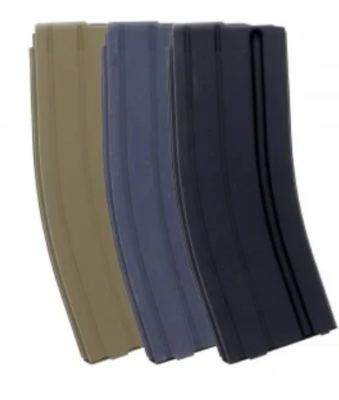
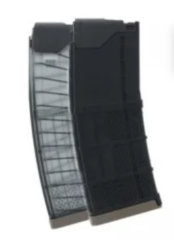

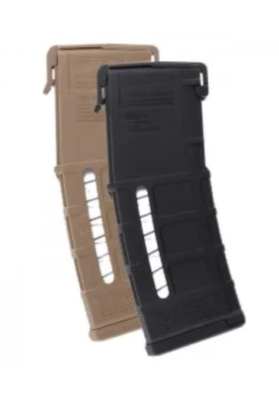
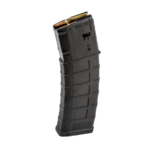
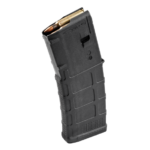
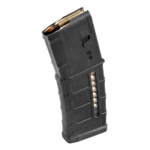
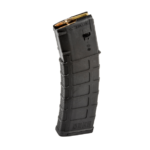
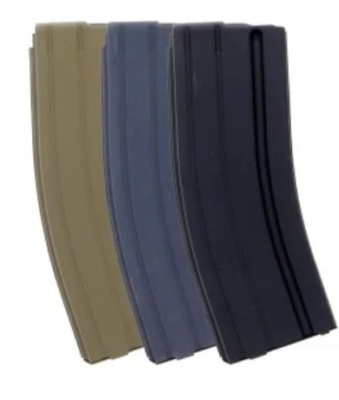


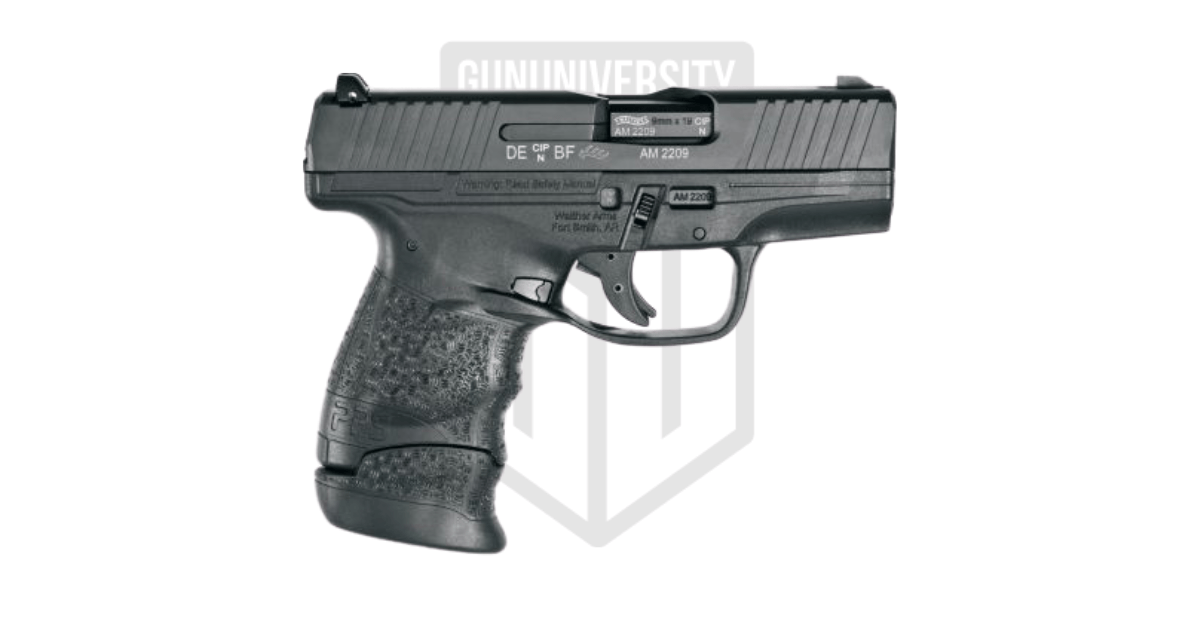
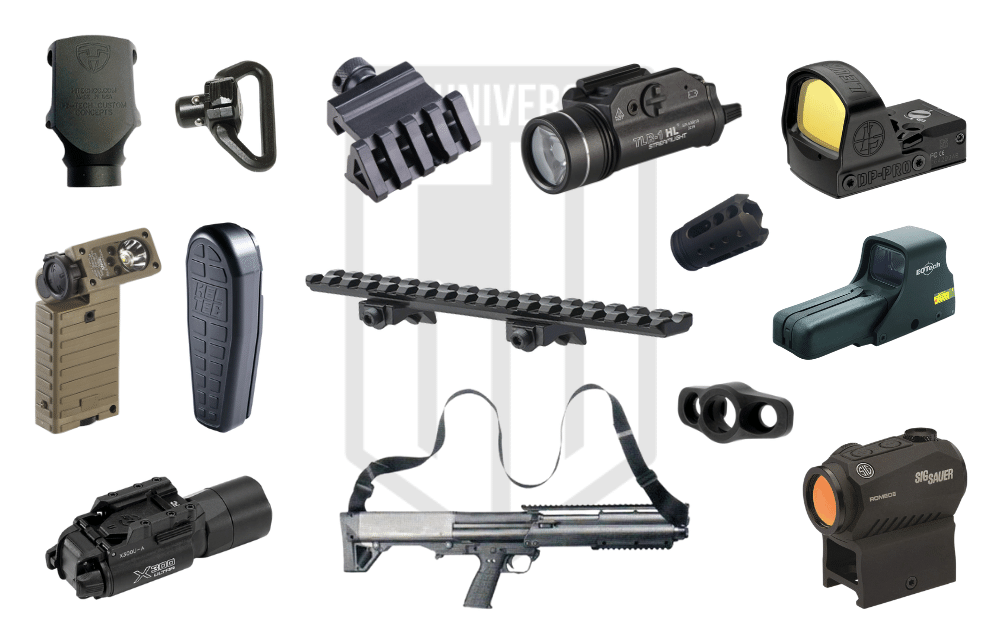
California AR-15 Magazine Ban [Legal Status Explained]
Thanks for the detailed explanation. You’s got’s to be careful out there. The law can be very tricky.